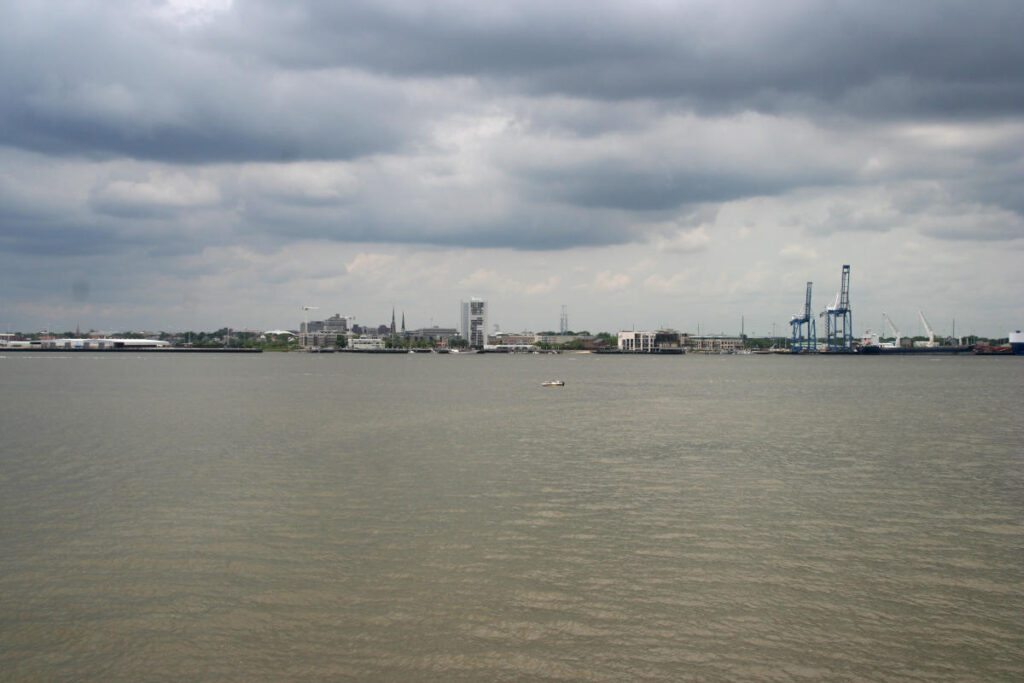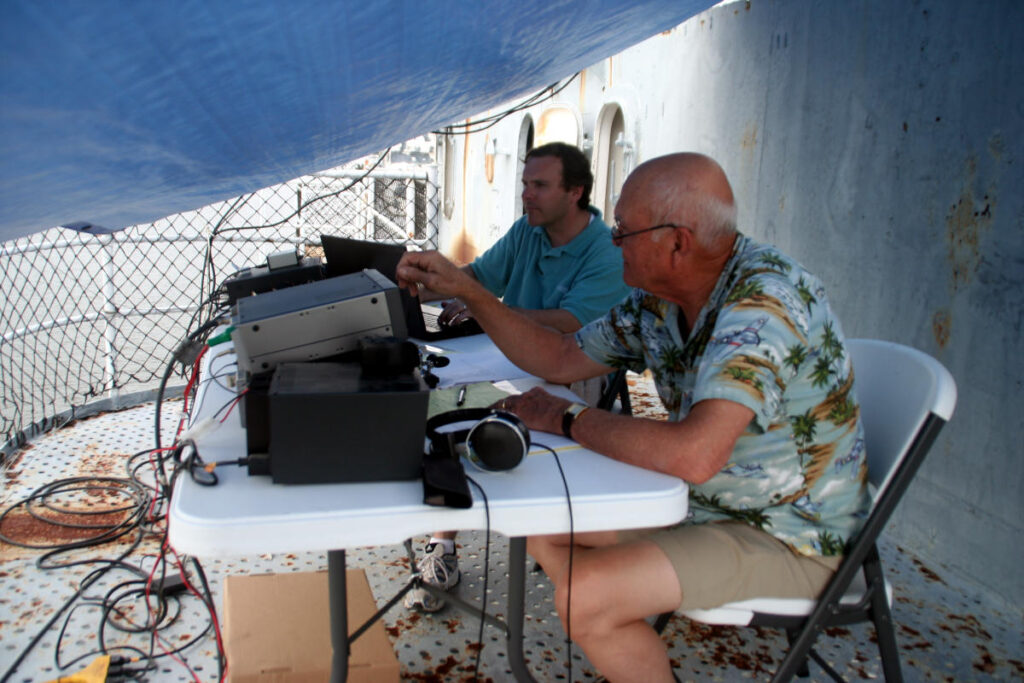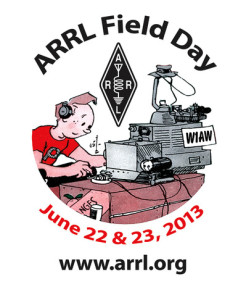Had a most excellent time at Field Day yesterday on board the USS Yorktown with CARS. I was put in charge of IT, which meant setting up the two laptops and a little local wifi network so that they could communicate and share a log file.
At 1800UTC (2PM EDT), the chaos the activity started. I spent the first few hours in seek and pounce mode (S&P), tuning around 40m at first and then moving up to 20 and then 15m. Was able to rack up a bunch of contacts, but it wasn’t easy. Thunderstorms to the southwest and in Georgia were causing static crashes because of the lightning. I’d be trying to work some strong stations, then 20-30db of noise would just wipe everything out on the frequency for a second or two. That went on for a few more hours, and then the rest of the evening was relatively clear. Then the problem went back to trying to pick out the Field Day exchange with neighbouring stations or groups of Boy Scouts stomping by behind us drowning everything out (the usual chaos).
I stayed on the Yorktown until around 10ish. A few other club members operated and got some pile ups going. I spent some time hanging out at the CW and digital station, taking photos and helping out with the logging on the phone station.
Field Day on the Yorktown offers a great view of the harbour and the Charleston penninsula while we’re operating.

This is the CW and digital station in action. Last year the CW station was set up in the club communications trailer out on the pier, but didn’t work out so well there, so it was brought up to the ship this time. The digital station was having a similar problem with noisy bands that we were having on the phone station so I don’t think there were too many contacts being made there.
Back for more Field Day fun today until 1800Z (2PM EDT) and then breaking everything down.
If you’re on the air for Field Day today, listen out for WA4USN. It might be me that’s operating!


